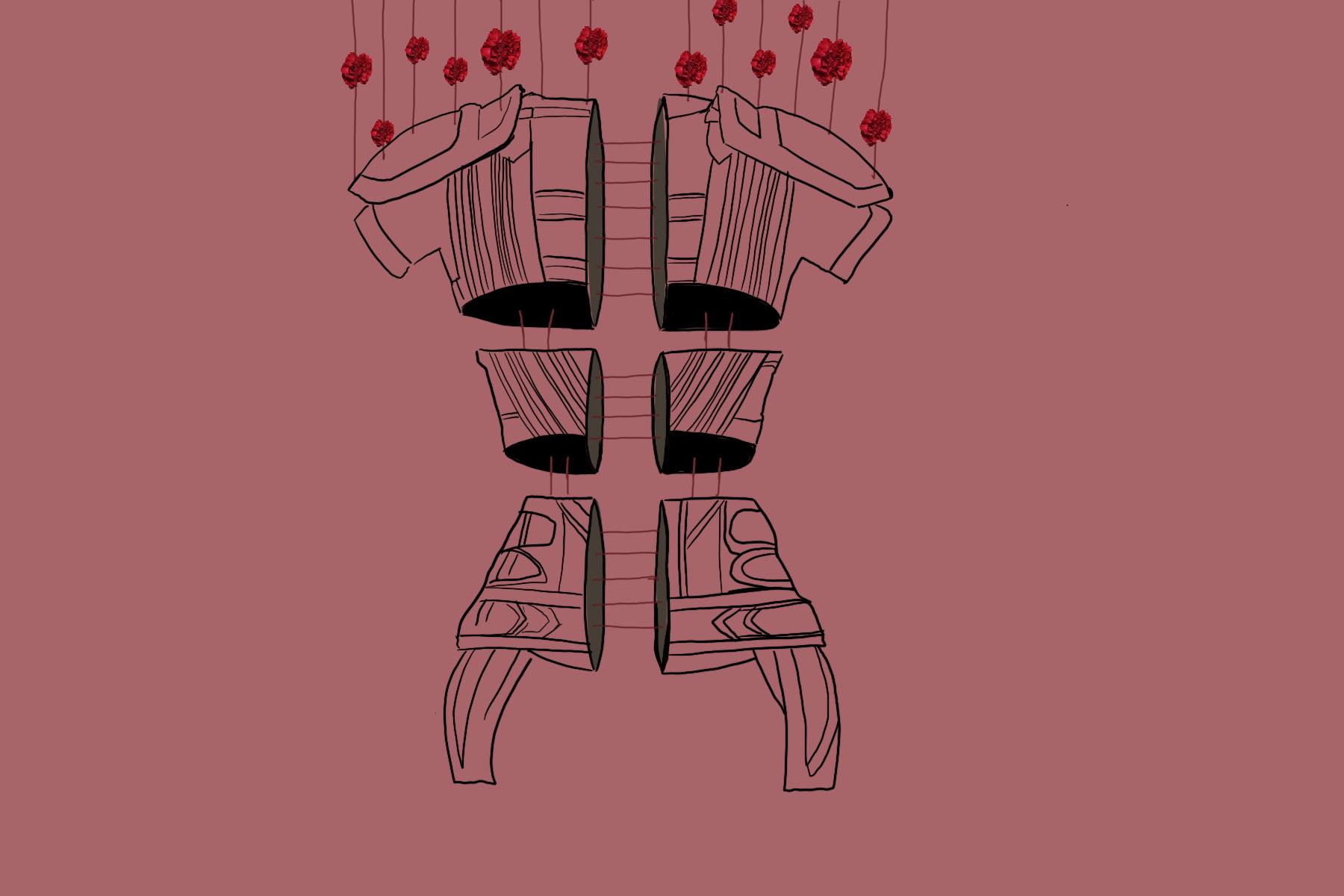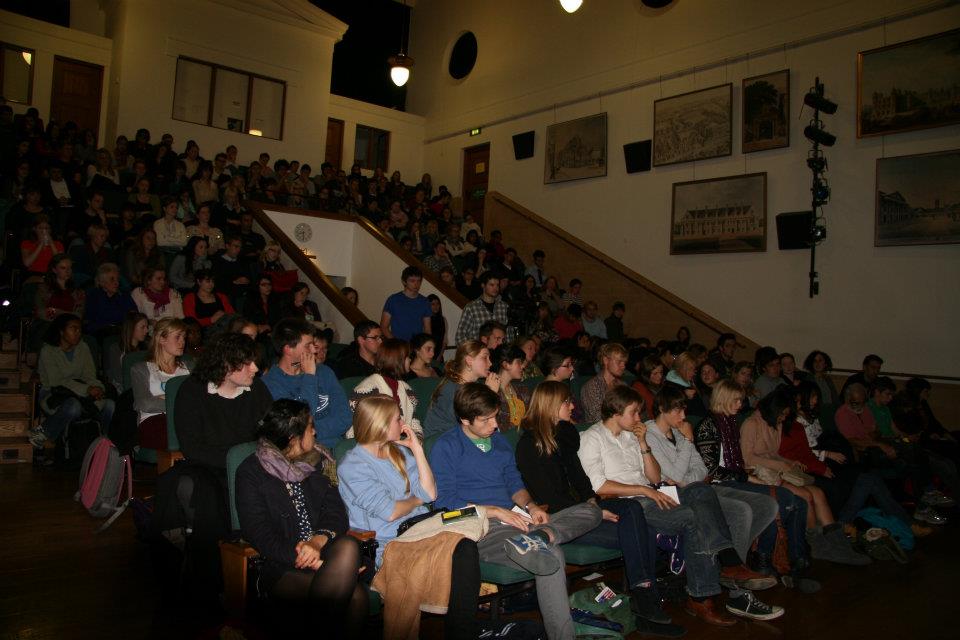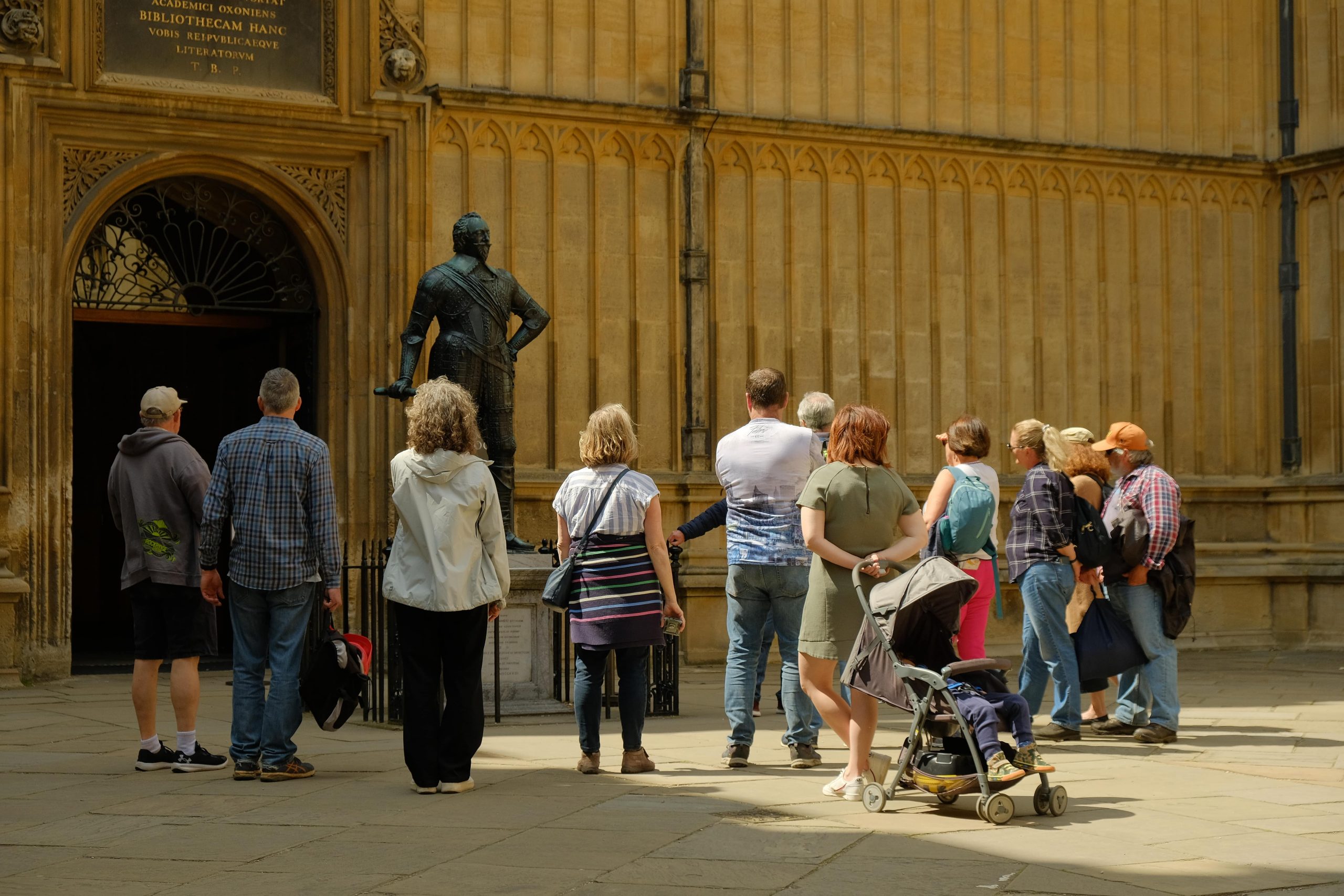
What We Talk About When We Talk About Oxford
When critiquing the Blue Guide — the iconic series of travel guides published from 1918 — Roland Barthes writes that “the human life of a country disappears to the exclusive benefit of its monuments”. Perhaps nowhere are his words more relevant than in our own ‘city of dreaming spires’. More so than other towns – indeed, more so than other university towns – Oxford is a town of tourists, consisting not only of travellers and tour groups, but also us students. We only stay for weeks at a time. Though we scorn the tourists who clog up the High Street, we have much more in common with them than we care to admit in the myths we tell each other about this town.
I wanted to find out how the ‘human life’ of Oxford is told through its monuments, so I spent a few weeks surreptitiously following tour groups around Oxford. I learned that these walking tours consist of strings of monuments, focused almost entirely around Broad Street, Radcliffe Square and especially around the Bodleian Library, Brasenose, All Souls, and Balliol. At times they extend to University Church and the Bridge of Sighs. Possibly the most used adjective to describe these places by tour guides is “quaint”. Tourists are endlessly fascinated, above all, by the eccentric stories of Rosa Luxemburg (Balliol’s tortoise which mysteriously disappeared in 2003), the Bodleian oath allegedly taken by every student, and Brasenose College’s name, supposedly originating from a brass (or ‘brazen’) doorknocker with a large nose ornament. These anecdotes are made more thrilling by the inclusion of famous figures: C. S. Lewis, J. R. R. Tolkien, and of course, Harry Potter. I’ve always thought that Oxford felt more like a movie set than an actual town, and this is probably in large part because it is most often described through the fiction it inspired.
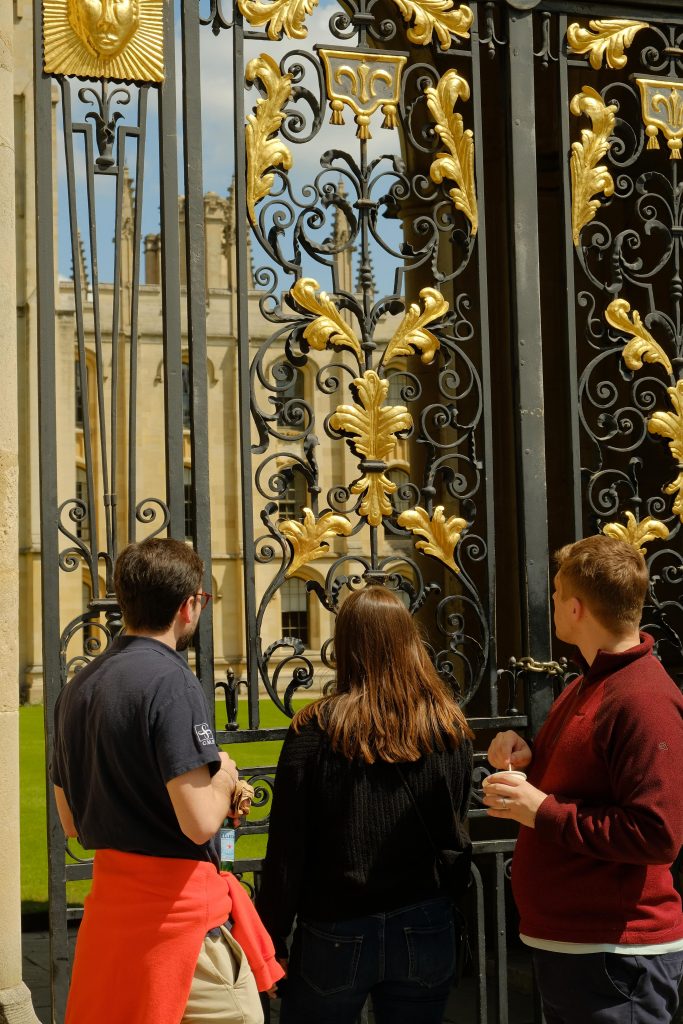
Oxford’s oldness, emphasised by the tour guides’ stories, seems to make these quaint anecdotes worth hearing. The continuity and historicity of traditions give them meaning and prestige that transcends their triviality. Of course, the Bodleian oath is now a usually skipped formality, and subfusc is half-heartedly enforced at best. Nevertheless, these archaic customs prompt visions of a baroque, mysterious, and inaccessible town of scholars. The antics of bored students are transformed into clandestine rituals to which tourists are made temporarily privy through their guide – much like Dante peeking at the ancient philosophers on the fields of Limbo. Tour guides are especially eager to point to All Souls as the “most exclusive” of Oxford colleges, as well as to describe the ongoing academic hierarchy of the Norrington Table and the sheer wealth of Oxford’s academic institutions. This air of exclusivity is at the crux of what seems to make Oxford so fascinating to onlookers.
Contrary to what Barthes wrote, then, tourists rarely seem to be interested in the monuments themselves. In fact, the walking tours I eavesdropped upon never commented upon the arches, buttresses, and spires of the town’s architecture. Instead, monuments in the tourists’ gaze become mere backdrops to the anecdotes that occurred there, and simultaneously, the gravity of these set pieces warp the actual stories into their most palatable and exciting versions. Rather than the mundane humdrum of essay crises and kebab vans, Oxford student life is mythologised into what is essentially Harry Potter with slightly less actual magic.
However, we too are complicit in perpetuating this city of tourists. Like many other students, I tell my family about the strange customs of Oxford when asked about my university – the Oriel pancake race, Merton’s annual time ceremony, the Mallard Song at All Souls – and I too seek out Neoclassical libraries because I think it helps me study.
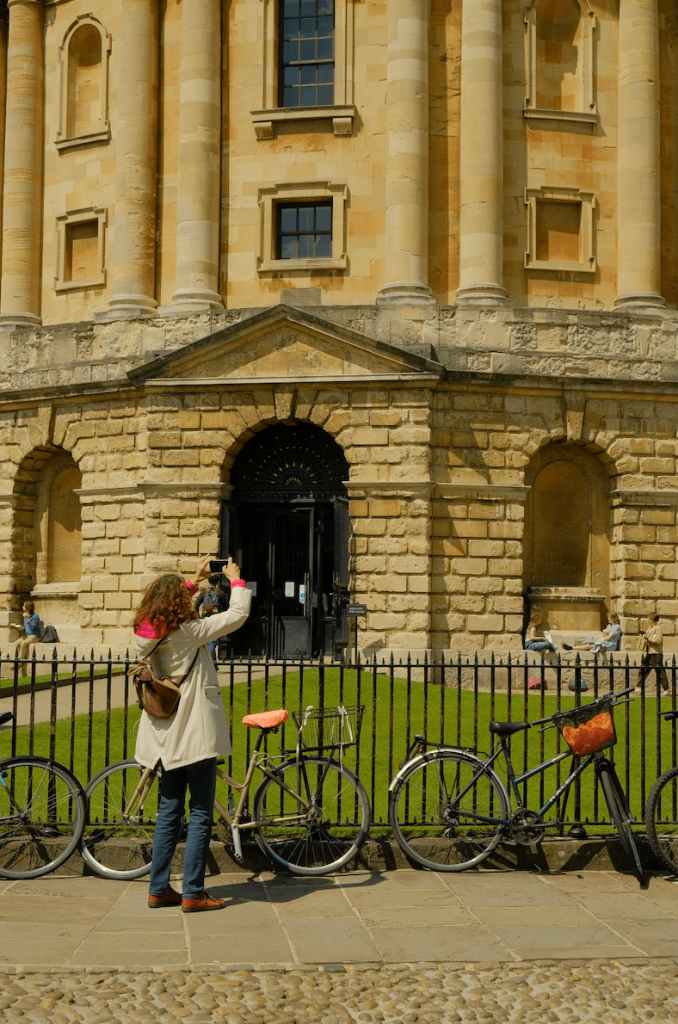
One specific manifestation of this phenomenon of self-mythologisation has been the popularity of the ‘Dark Academia’ aesthetic. Given that the aesthetic consists largely of sepia photos of the university, it is no surprise that this trend has gained purchase among its students. As Dr Sarah Burton, a fellow from City University of London’s Sociology Department, has observed, the aesthetics of ‘Dark Academia’ are about negotiating what it means to feel and look like an intellectual. And in a university where it is so easy to feel like an imposter, a degree of this aestheticisation – to dress up in tweed and seek dimly lit libraries – can help us to feel like we belong. Furthermore, in co-opting an aesthetic sensibility traditionally reserved for white, upper-class men within female-dominated digital spaces, ‘Dark Academia’ allows one to assert one’s own place within institutions like Oxford.
Standing in contrast to this self-assertive mythologisation is the historical ‘backwardness’ of Oxford. This is another aspect of the university which proves to be a constant fascination amongst tour groups. Often glossed as simply “feudal”, tourists are told by their guides about how recently women were allowed into Oxford colleges. One particularly theatrical guide painted a vivid picture of a Victorian woman at a Dickensian boarding school where, strangely enough, maps and globes were prohibited. Highlighting the injustice and ignorance of the past can certainly serve an edifying purpose. Perhaps the point is to look back at the progress made by both Oxford and wider society, to contrast it with the inequalities we have left behind.
Nevertheless, such a simple approach to the history of a town and institution inevitably obscures as much as it reveals. Looking backwards, the vision of historical Oxford as simply archaic and exclusive erases the real and continuous efforts made to open up the institution. This view of the past serves as an undeserved pat on the back that hides the continuing problems of injustice that plague the university. For example, one story that tour guides are keen on telling in front of University Church is that of the St Scholastica Day penance, in which the mayor and townspeople of Oxford had to beg for forgiveness each year in memory of the violent St Scholastica Day riot of 1355. The penance last occurred in 1825, which allows us to see this history of violent town-and-gown conflicts as a thing of the past – another quaint feature of historical Oxford – without interrogating conflict, such as the gross social inequality between the average student of the university and the local inhabitant of Oxford. These too, by extension, are subsumed into an irrelevant past.
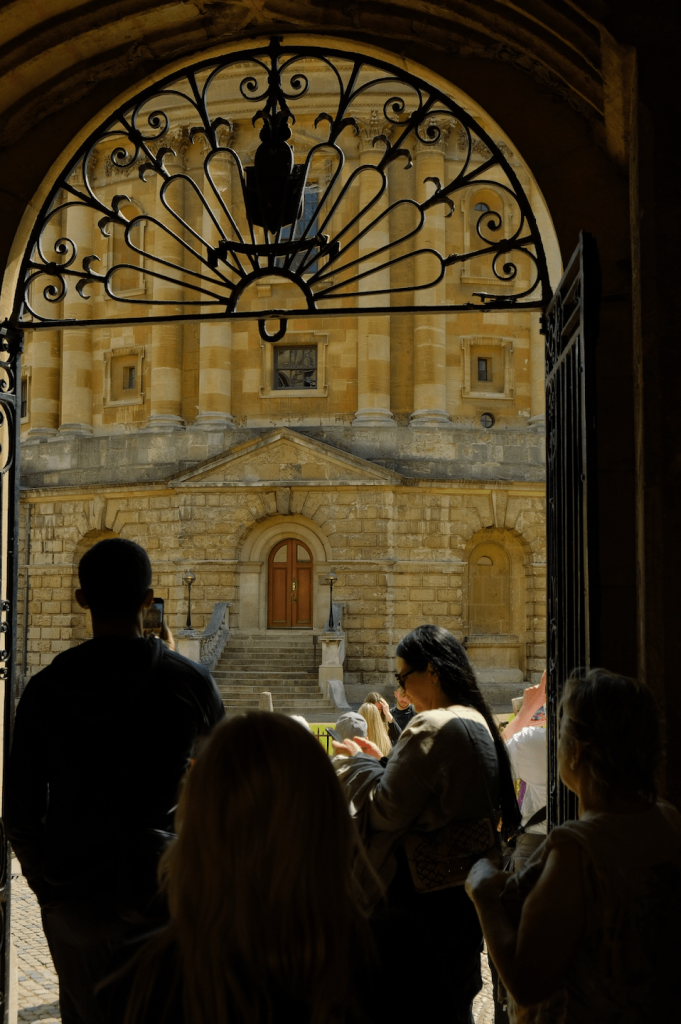
Such ahistorical and anachronistic descriptions of Oxford’s complex stories can hinder our understanding of history. To me, what makes Oxford an architectural marvel is that it is a palimpsest – it is constantly being added to. However, in looking only at monuments, these complexities are flattened into anachronisms such as ‘medieval’, ‘ancient’, or simply ‘old’. As Barthes wrote, modern tourism “accounts for […] nothing historical, and as a consequence, the monuments themselves become undecipherable, therefore senseless”. The guide, in Barthes’ conception, becomes ironically “an agent of blindness.”
Not only that, but I believe Barthes is at his most astute when he observes that the myths we tell ourselves tend to have an obliquely conservative bent. As much as tourists’ fascination with an archaic and backward Oxford may be a way of celebrating our history of progress, it is just as likely be interpreted as an uncritical longing for anything that seems aesthetically and politically old and traditional. Indeed, there is a twinge of nostalgia and a longing for a world lost to time in the tone of many tour guides. For example, one guide would stand in front of the Old Bodleian to describe Oxford’s historical prestige, only to then comment in a slightly more ominous tone that before the pandemic, Chinese students far outnumbered American and European students. At times, it is unclear whether the historical backwardness of Oxford is something to be derided or lauded.
Ultimately, this is the ideological function of public monuments: to justify their own existence. The unquestionable beauty of the monuments that surround us in Oxford implicitly legitimises the violence and exploitation that made their construction possible. Not only that but under the name of preservation, our obsession with monuments suppresses any voices that call for criticism and re-evaluation. Starting in 2015, students and activists called for the statue of Cecil Rhodes to be removed from Oriel College’s High Street facade, and a throng of public intellectuals came to its defence. Representative of this position was Professor Mary Beard’s argument that though Rhodes was certainly racist, so were most of his contemporaries. In reality, Rhodes was a deeply controversial figure even in his own time and was seen as uniquely cruel and criminal by contemporaries such as Mark Twain. In 1899, when he received his honorary degree from Oxford, the university’s staff, ranging from the Master of Balliol to both its proctors, vehemently opposed it. Soon after the statue was erected, Evelyn Waugh wrote in 1930 that “a very small amount of dynamite should be enough to rid us forever of the High Street front of Oriel.” Yet, when I have eavesdropped upon tour groups around the High Street, as often as I hear about the controversies surrounding such figures as Rhodes or Christopher Codrington, I hear that same tired defence, that everyone was like that at the time. And now that these statues are safely ensconced in their limestone niches, their existence – and by extension the violent horrors inflicted by them – seems almost self-evident and predetermined. It has always been so, and so it shall always be.
Words by Dowon Jung.
Photography by InChan Yang.



